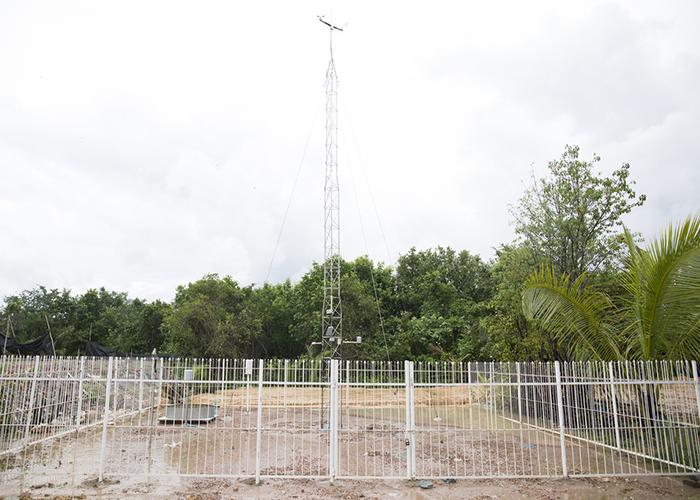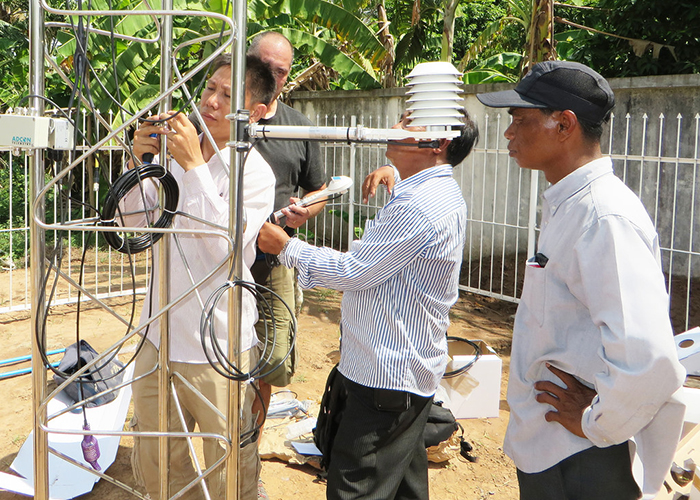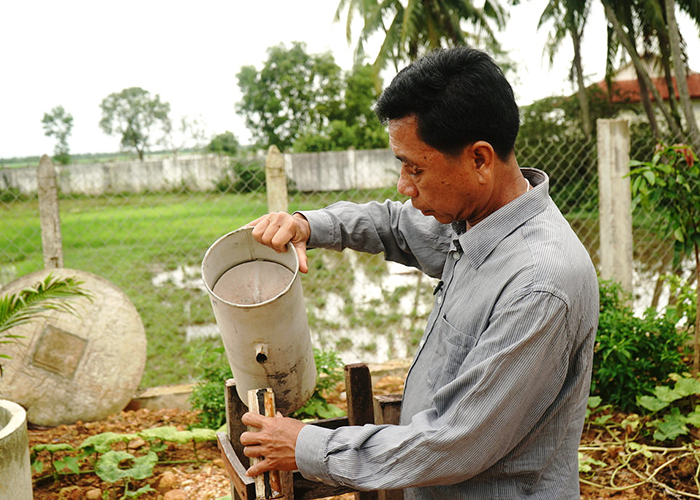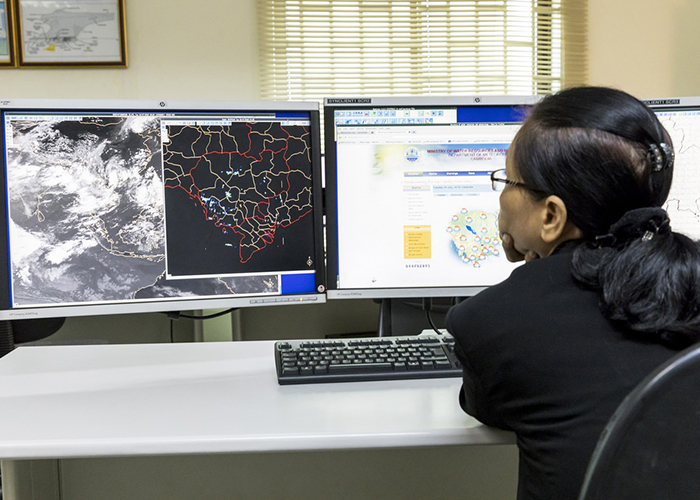Phnom Penh, 22 March 2019 – In commemoration of World Meteorological Day 2019, the United Nations Development Programme (UNDP) in Cambodia has handed over 24 automatic weather stations and 29 automatic hydrological stations to the Ministry of Water Resources and Meteorology in Phnom Penh. The handover of the stations brings the Cambodian government one step closer to adapting to climate change, in line with Sustainable Development Goal 13: Take urgent action to combat climate change and its impacts.
Reliable climate information and forecasting is important in any country but is particularly so in a country like Cambodia in which around 80 per cent of the population live in rural areas, with many reliant on weather-dependent livelihoods in agriculture and fisheries.
With the financial backing of GEF-Least Developed Countries Fund, the project 'Strengthening Climate Information and Early Warning Systems in Cambodia to Support Climate Resilient Development and Adaptation to Climate Change' has been supporting the Royal Government of Cambodia since 2015 to address the gaps and challenges, boosting climate information and early warning systems.
“Our aim is to equip Cambodia with reliable infrastructure, including new and upgraded weather and hydrological stations, for improved data capture, forecasting and sharing of information for planning as well as disaster preparedness ”, said Project Manager Muhibuddin Usamah. “Real-time climate and environment data can be used to detect adverse trends, predict potential climatic impacts and analyze ongoing weather patterns. But it’s not just about data, it’s about people, and so this project is coupling this science-based approach towards climate adaptation with community-based action, such as farmer field schools and district-level disaster management committees.”
By working alongside various line departments including the Ministry of Water Resources and Meteorology; Ministry of Agriculture, Forestry and Fisheries; and the National Committee for Disaster Management, the project has sought to address current barriers through three complementary outcomes: (1) installing automatic weather stations and automatic hydrological stations for climate data and information, as well as developing / proposing hydro-meteorological platform for climate modelling, (2) increased institutional capacity to assimilate and forecast weather, hydrological and climate information, and (3) dissemination of climate information for national, sub-national as well as sectoral planning.
Over the past year, the project has installed 24 automatic weather stations and 29 automatic hydrological stations (including 24 stations for surface water and five for groundwater), concentrated in the disaster-prone south-eastern provinces of Kohn Kong, Kampong Speu, Takeo, Kep, Sihanouk Ville and Kampot. Three weather stations and a hydrological station have also been installed in Kandal, two hydrological stations in the capital Phnom Penh and weather stations in Preah Vihear and Kampong Cham. Today, the stations are being handed over to the government.
Amongst other parameters, each weather station uses various sensors for monitoring air temperature, relative humidity, dew point, wind speed and direction, rain levels and water levels and temperature. This information is then fed back automatically to the Department of Meteorology’s website, www.cambodiameteo.com. For many years prior to the project, such information had often been collected and reported manually by locals, resulting in tedious daily processes and delays.
With the weather stations successfully transmitting real-time data since their installation, the project has allowed for a smooth flow of information within and between national and provincial government levels. As a result, early warning information-sharing mechanisms have been developed consistent with the National Committee for Disaster Management’s Law on Disaster Management, reducing the risk of losses and damages if and when disaster strikes.
UNDP will continue working alongside the Department of Meteorology to advance meteorological and hydrological observation and analysis, including the development of a customised seasonal climate forecast system.
 Handover ceremony © Manuth Buth/UNDP Cambodia
Handover ceremony © Manuth Buth/UNDP Cambodia
 Automatic weather station installed under the project, Koh Krong Province, July 2018 © Samruol Im/UNDP Cambodia
Automatic weather station installed under the project, Koh Krong Province, July 2018 © Samruol Im/UNDP Cambodia

Fixing sensors to the 10-metre high mast of the new automatic weather station in Koh Thom, installed under the UNDP-supported project ‘Strengthening Climate Information and Early Warning Systems in Cambodia’ 2018 © MOWRAM Cambodia

In the past, manual measurements were taken daily and reported to the Department of Meteorology by phone call. © Samruol Im/UNDP Cambodia
 Data captured by the stations is analysed in the Department of Meteorology operations room, MOWRAM, Phnom Penh, Cambodia, July 2018 © Ratha Soy/UNDP Cambodia
Data captured by the stations is analysed in the Department of Meteorology operations room, MOWRAM, Phnom Penh, Cambodia, July 2018 © Ratha Soy/UNDP Cambodia
About the ‘Strengthening Climate Information and Early Warning Systems in Cambodia’ project
With financing from the GEF-Least Developed Countries Fund, the UNDP-supported project ‘Strengthening Climate Information and Early Warning Systems in Cambodia’ aims to increase Cambodia’s institutional capacity to assimilate and forecast weather, hydrological, and climate information for adaptation, disaster preparedness, and early warning.
For photos related to the project, please visit https://www.flickr.com/photos/undpclimatechangeadaptation/sets/72157698388535814
Related Articles
‘UNDP Cambodia announces partnership with global climate experts of RIMES, advancing forecasting for the future’, February 2019
‘Cambodia, looking to the horizon, prepares for drought’, January 2019
'UNDP and People in Need continue collaboration to realise a weather-ready climate-smart Cambodia', November 2018
'Linking technology and community early warning: UNDP and People in Need to extend disaster early warning for Koh Kong and Sihanoukville communities', September 2018
'Knowledge is everything when it comes to early warning', June 2018
Mr. Muhibuddin Usamah | Early Warning Systems Project Manager, UNDP Cambodia | muhibuddin.usamah@undp.org | Tw: @muhiusamah
Mr. Samruol Im | Communications Analyst, UNDP Cambodia | Samruol.im@undp.org
For updates on this project and UNDP Cambodia’s broader work, follow @UNDP Cambodia on Facebook, Twitter and LinkedIn
